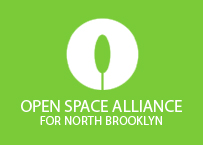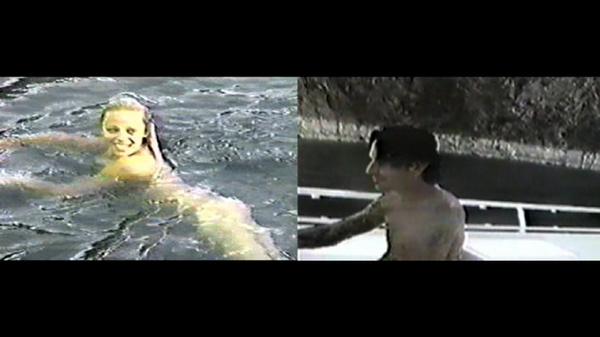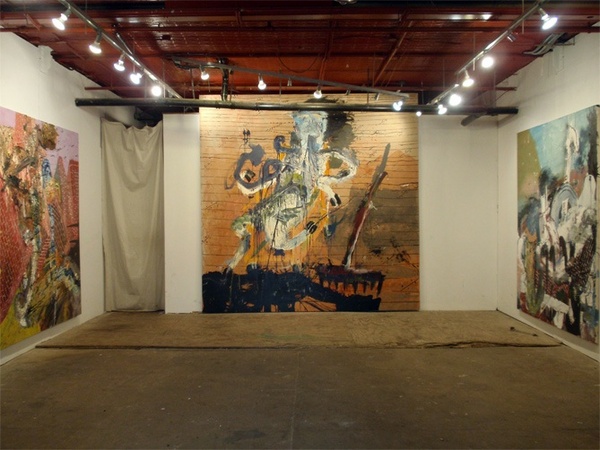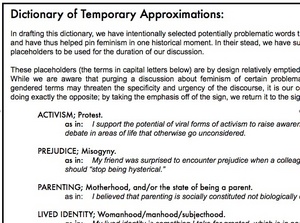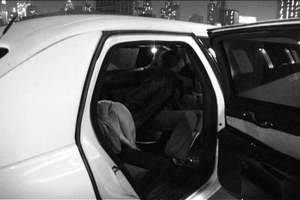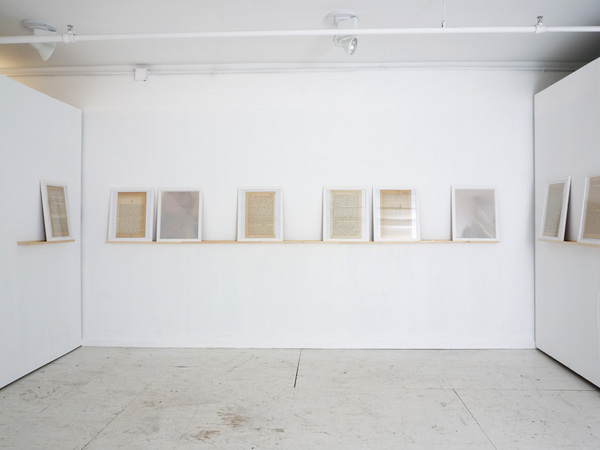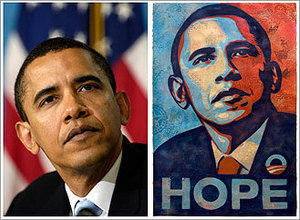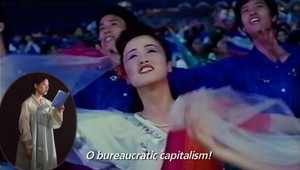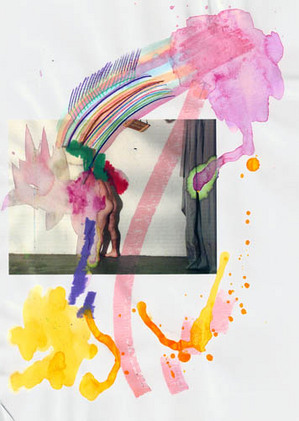This is an archive of the ArtCat Zine, 2007-2009. Please visit our new project, IDIOM.
February 2009
On Wednesday, local Brooklyn artists met at Brooklyn Brewery to drink free beer and discuss possibilities for public art in North Williamsburg. The area under consideration, City Council Member David Yassky’s District 33, stretches from McGolrick Park in Greenpoint to Grand Army Plaza, with all sorts of fences, sidewalks, medians, and road barriers in between.
The Open Space Alliance (OSA), a group advocating for both new and existing parks, has partnered with CM Yassky and various city organizations all aimed at beautifying public spaces and showcasing emerging local artists. “Art in the Parks,” a branch of the New York City Department for Parks and Recreation, has been supporting public art in all 5 boroughs for over 40 years. They look for site-specific work that integrates with the natural landscape and does not interfere with existing park functions or require unreasonable maintenance. The Percent for Art Program, initiated by Mayor Koch in 1982, requires that 1% of all new city-funded construction projects be put aside for permanent public artwork. Commissioned art can be in any medium, but the work must be integrated into the infrastructure. The Department of Transportation’s (DOT) Urban Art Program is more focused on temporary public art, and projects that integrate community outreach and art education. Artists must find an organization to collaborate with, and locations are limited to DOT owned sites. Other opportunities include a large mural on India Street, offered up by Palin Enterprises, and the Crest Hardware Art Show.
Wednesday night’s meeting, the first of the North Brooklyn Public Art Coalition, proves there are unlimited possibilities for public art in District 33. According to CM Yassky, NBPAC will be responsible for “scouting out ideal locations for public art, actively seeking out partnerships and funding for public art in the area, and keeping its members apprised of all public art opportunities.”
If you missed the meeting and want to get in on the action, you can contact Rami Metal in Yassky’s office at rmetal [at] council.nyc.gov or you can contact the organizations directly: OSA, Percent for Art Program, Urban Art Program.
Screening: Forward and Backward Pam and Tommy.
Friday, February 27, 2009 - 12–5 pm, reception 5–9 pm
Envoy Gallery - 131 Chrystie Street
Does the arrival of the celebrity sex-tape signal a new era in cultural production - or merely the making public of what has been the dominant currency all along? In either case, it is remarkable is that the distinction between celebrity sex-tape and pornography has somehow remained in place. Thus Paris Hilton and Kim Kardashian ought to be considered pornstars, seeing as how they're famous entirely because of their performance in works of amateur pornography. Yet they have been able to retroactively claim celebrity status, making their infamous work into 'sex tapes' rather than adult film. The work in question becomes of them but not by them, they are some kind of victim, perhaps, but definitely not authors, and as such can claim a distance from the industry of pornography while still capitalizing on the powerful engine of its widespread circulation.
This flip side of this coin is the historical use of personal nudity by female Disney stars to recast themselves in the public eye or, in one recent episode, in an effort to escape from one of Disney's famously Faustian contracts which, amongst other indignities, demandsparticipation in unlimited sequels, In this case, sex is leveraged against Disney's brand identity, while in the case of celebrity porn, sex is used as a sort of scaffolding, propping up a fledgling brand until it can be safely secured by a string of reality TV-shows. This Friday, artist Chris Bors takes us back to the original celebrity sex tape, that of Pamela Anderson and Tommy Lee, in order to investigate how this whole unfortunate situation got started.
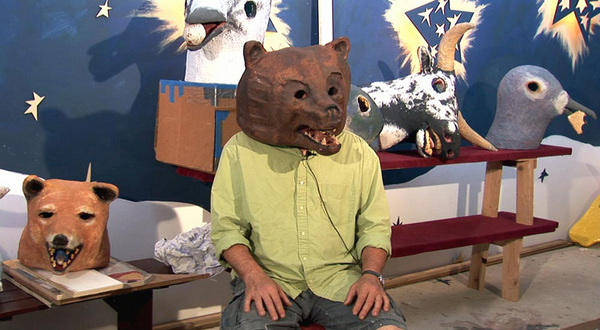
Screening: Brooklyn DIY: The History of Williamsburg's Art Scene 1987-2007
Wednesday, February 25, 2009, 8:30 p.m.
The Museum of Modern Art - 11 West 53 Street
Few cities in history have ever fielded a cultural spectrum as full as that of contemporary New York. Each of the arts enjoys large and powerful institutions devoted to the careful tending of elite lineages, while each simultaneously sports a more or less robust community of smaller, younger and more experimental practitioners. Yet the intramural organization of this spectrum varies considerably from art to art. In the performing arts, for example, the largest institutions remain decidedly for-profit, due in large part to Disney Theatricals ongoing dominion over Broadway. Off-Broadway and Off-Off Broadway are, for their part, now almost entirely the domain of non-profits. In contemporary art, by contrast, the largest institutions are resolutely non-profit, while an entire mid-range genre, the gallery, is not only for-profit, but profitable, always an important distinction. Non-profits appear again as the smallest format of contemporary art producers, and these often begin as hyper-local, fixated in and around specific neighborhoods.
Of all these institutions, the MOMA occupies a unique place. Straddling the divide between an active cultivation of a contemporary cannon and fortifying the myriad colonies of artistic modernism, MOMA is at once a historical temple and an all-powerful factory; its free admission Fridays standing as a sort of present-day bread and circus, able to appease and inspire in equal measure. When MOMA moves aggressively to expand the masthead of the modern, entire inaugurations are mobilized as counter-narratives. The MOMA, like the New York Times, is a cultural leviathan so large and, it must said, so generally benevolent (with notable exceptions) that it can be great sport to mock its sometimes clumsy probing of the ultra-current, the experimental, and the truly new. For many of these currents official sanction from either organization is as much an end as it is a beginning. So it is perhaps altogether appropriate that tonight MOMA is screening a ("long overdue"!) documentary entitled Brooklyn DIY:The History of Williamsburg's Art Scene 1987-2007. Williamsburg, as we know, is the latest, eastern, ethnic enclave to travel the well worn path past artists' bedroom community into gentrified respectability, lately pushing the process well past the absurd . Thus, like the West Village, SoHo, the East Village, and Alphabet City before it, its probably high-time to lay its cutting-edge status to rest once and for all, safely behind MOMA's glass casing of historical significance.
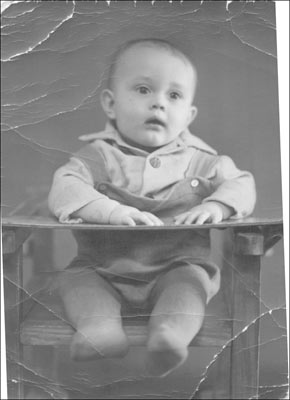
The Obsolescence Of The Photographic Object
Panel Discussion at The New School -
February 25, 2009 7:00 PM - 66 West 12th Street - Free
When Walter Benjamin famously mused, "that which withers in the age of mechanical reproduction is the aura of the work of art." he was referring quite explicitly to the arrival of photography and film. These two media, for which he held out a cautious, albeit decidedly political, optimism demanded a rethinking of the specificity of the art-work in terms of something other than mimesis and singularity. The significant thing for Benjamin was that a photograph was an object that could be reproduced, printed again, with no objective difference between iterations, and thus stood in contrast to a sculpture or a painting. What Benjamin passes over, however, is that, in practice -- that is to say in everyday life -- photos behaved very much like objects in the traditional sense. Photos were taped to lockers, put in frames, squirreled a way in pockets and in backpacks. They got old, yellowed, faded; they were kissed in love and torn up in anger. In short, the technical reproducibility of the photograph did not prevent an individual print from becoming enchanted, of, over time, having an aura constructed for it via a variety of daily pieties.
That is until recently. Now, with the victory of digital technology almost complete, very few people bother to print photos out anymore, never mind having them developed, and most are kept on computers or on cell phones. The significance of this development is the topic of a panel at the New School tomorrow, called, appropriately, THE OBSOLESCENCE OF THE PHOTOGRAPHIC OBJECT. Mia Fineman, curator of photography at the Metropolitan Museum of Art, will moderate; panelists include artists Leslie Hewitt, Miranda Lichtenstein, and Mark Wyse.
.
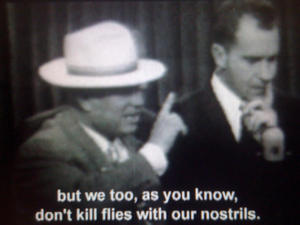
DOUBLE TAKE, followed by Q&A with Johan Grimonprez
6:30 Wednesday 25 February 2009
Sean Kelly Gallery - 528 W. 29th St, New York NY
The centerpiece of Belgian artist Johan Grimonprez's current solo exhibition at Sean Kelly Gallery is Double Take, a new feature-length video playing daily at scheduled times during the gallery's normal hours. The film is the second major video work to follow Johan's 1998 breakthrough Dial H-I-S-T-O-R-Y, a study of political radicals operating as airplane hijackers and their transformation in both the media landscape and popular imagination since the 1960s. Grimonprez's new work, co-written with novelist Tom McCarthy, turns an obsessive eye to Alfred Hitchcock, theorizing his creative output from the 50s and 60s in the greater context of Cold War American culture. Like Dial H-I-S-T-O-R-Y , the new video is composed of a melange of diverse media, from broadcast television to some odder moments of Hitchcock features. The work's central narrative features a Borges-like short story, narrated by a Hitchcock soundalike, about the filmmaker meeting his double on the set of The Birds.
In addition to regular programming during gallery hours, Sean Kelly Gallery has scheduled several after-hours evening engagements in which the film will be be shown. The first such engagement will be this Wednesday at 6:30, followed by a Q&A session with the filmmaker. This event comes highly recommended.
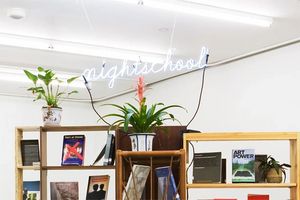
E-flux announces the last Night School session at the New Museum, this one with Berlin-based writer Jan Verwoert. In the Times, Holland Carter argues for the continued importance of university museums; ARTnews adds to a growing pile of articles arguing that the recession will help the arts; after some consternation, art and friends are back in the stimulus bill; Tyler Green is not impressed, and makes an excellent case for rethinking the emphasis placed on the NEA; elsewhere Vice released a profile of a new and completely disturbing musical subculture while New York Theater Workshop considers staging a new and controversial play (about which the Times has already made up its mind, apparently); while the ballet cuts dancers; back in the art world The New Yorker and n+1 weigh in on Shep Fairey, and art fair season looms. Finally, Ed Halter pens an interesting piece on cultural documentarian Jeff Krulik in the latest triple canopy.
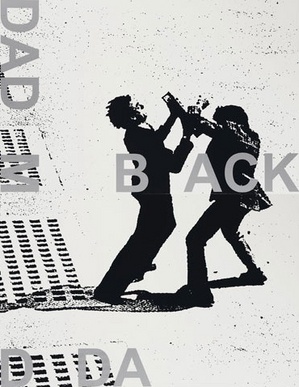
As has been hyperlinked, excerpted and commented on extensively elsewhere across the net, the New York Times' Holland Cotter has penned a bracing text on what he sees as an imminent future for art makers characterized by extensive de-commercialization and market contraction. Cotter sketches for us an inspiring historical legacy of a city that found itself, culturally speaking, at the bottom of an early 70s economic downturn. It's a time hard to conceive in the thoroughly neoliberal vision that is contemporary New York, where basic life necessities like health insurance are often contingent on full-time employment and the ever ballooning cost of live and work space makes keeping a discreet studio less and less realistic for many young writers and artists.
Similarly spirited, if more politically explicit, is Walter Benn Michaels' recent text on American literature and social inequity appearing in the pages of Bookforum this month. The ever popular memoir, Benn Michaels argues -- that most Thatcherite of literary genres -- is the marker of a society orientated towards the alienation of the individual in every respect: in success, as in failure and destitution, we are a mass of solitary actors accountable exclusively to ourselves and our own appetites. Contemporary postmodern and historicist fiction meanwhile, obscures the conditions of the present by working towards the continual re-imagining of some past or another, obsessing over the West's 20th century triumphs over fascism, totalitarianism and the Cold War. And yet nowhere is accounted the growing disparity between rich and poor, starker in this country two years ago than it has been for nearly the past century. Benn Michaels writes:
In 2006, according to the economists Thomas Piketty and Emmanuel Saez, the top tenth earned about half of all the money made in America, more even than in 1928, till then the highest figure of the century. The bottom quintile got 3.4 percent. For a great many Americans, in other words, the boom has been the problem, not the crash.
Andy Piedilato
English Kills - 114 Forrest St, Brooklyn NY
10 January - 15 February 2009 (Update: extended through Saturday 22 February 2009)
Andy Piedilato's paintings exude a sensuous formal tension between two rival patterns. Subdued grid-like architectural structures reckon with clouds of multi-chromatic painterly smoke that surround, cover or conceal them. These wild clouds with their flourishes of multi-layered color envelop a brick chimney in one picture. Another picture casts this "smoke" as a painterly blizzard assailing a stone castle's tower.
Piedilato embraces an underlying composition that resembles images of the dragon in Asian art. The monster's scales form one cubic pattern that is juxtaposed against the circular flourishes of its breath of fire. It's a yin-yang between the meticulous organization of linear lines and the chaotic explosions of the curvilinear, between a heavy solid and a formless gas. Such polar opposites attract because they allow us to appreciate the singularity of each pattern by simultaneously experiencing its opposite so immediately. It's like an optical chocolate orange or a retinal sweet and sour sauce.
Clouds of painterly smoke or haze have a long history in 20th century abstract art. But contemporary painters sometimes follow Pollock's example too closely. Many unequivocally embrace his homogeneous approach to covering the entire picture place with one "consistently chaotic" pattern. This oxymoron in words signals a danger in the visual. Joan Mitchell, Gerhard Richter and Anselm Kiefer have striven to fend off this risk of boring formal monotony. By interspersing his color clouds with architectural grids, Piedilato's polychromatic smoke appears scarce and precious rather than overabundant and worthless. The chaos does actually seem like chaos instead of just its own kind of order.
Back to the Future: An Experimental Discussion on Contemporary Feminist Practice
Whitney Museum - 945 Madison Avenue, New York NY.
5th floor.
6:30, Rsvp required (by Thurs 17 Feb).
Artist Liz Linden and art historian Jen Kennedy have organized an experimental discussion on feminism this upcoming Saturday at the Whitney Museum. Linden and Kennedy, colleagues at the Whitney Independent Study Program, have structured the event around a critical lexicon of gendered social critique. Suggesting more benign and unspecific substitutions for the hot button words of this vocabulary, the two have constructed the schematics for a scenario in which the original words, by way of their omission, are poised to eclipse the blunting effects of functioning primarily as historical terms. The motive for the event is to get to the thing itself: the critical approach to gender and social relations against the storm of time that sometimes abrades even the sharpest of words.
The event takes place after the usual museum closing hours, on the fifth floor galleries. Attendance is free and open to public, but an RSVP is required. To register, please see instructions on the Whitney's website [PDF linked].


Admittedly, it's not the best choice of dates for a fundraiser. If you are dateless you can console yourself with great art and free food and drink, or buy some art for your loved one at tomorrow's WagMag benefit. The printed version of the WagMag map is what I use every time I go to Williamsburg to plot out my course. They have just expanded to cover all of Brooklyn!
Here are the details:
Advanced Viewing January 31st-February 14th
Reception and Raffle of work Saturday February 14th 7-9
Raffle at 8:00
Raffle tickets: $200
All tickets guarantee a work of art
Entry is free
You can give them a list of works you want if you can't be there during the raffle.
Visit the site to buy a ticket via PayPal and check out the works available. We've put a few examples at the top of this post.

I first came across the Shopdropping project in 2004 when I saw a big wall of re-configured cans stacked in perfect disarray across a wall in a big group show. Alongside were photographs of said cans in grocery stories, infusing the boring aisles with images of meat lockers, Belgian cobble stone streets, Ferris wheels and other photographs that artist Ryan Watkins-Hughes chose for each can. I eventually learned that his ongoing project is more than just adorning these cans; it's an action whose antecedents one could trace back to Situationist legacy, in line with a history of integrating art into life and creating social chaos that disturbs the inertia of an environment driven by commerce and consumption. Over the past few years, I even had the chance to to do a few "shopdrops" with Watkins-Hughes. Once in Providence, we were accused of corporate espionage, replete with threats and insults, followed by a prompt expulsion from the store. About a year ago Watkins-Hughes was profiled in the New York Times for his activities here. In April, he'll turn New York's Heist Gallery into a veritable bodega, changing the context and reception of his project, and possibly bringing it to its appropriate conclusion. -J.F.
Julie Fishkin: You've been doing the shopdropping project for quite a while now. Do you still see it as a form of social/corporate chaos?
Ryan Watkins-Hughes: I've been working on shopdropping in some form or another since 2003 or 2004? And while I'm consistently working on other projects, shopdropping seems to resonate and continue to offer new challenges to explore. My tendency is actually to be a little all over the place artistically, so it has been healthy to have one thing to come back to over the years. The key, I think, has been to keep developing the concept and to take it in new directions. The show at Heist Gallery in April will be a chance to flip the whole thing upside down. It'll be crucial to change the initial point of reference for the audience or it won't work in a gallery.
As far as creating social havoc, I'm much more interested in visual chaos and the breakdown of a "sensible" visual environment than any attempt at targeted social change. I have very little interest in creating an overt and direct critique of packaged culture and the consumer system. I'd rather create graphic mayhem within an environment that is usually so mundane. I wholly appreciate it when the unexpected, purely for its own sake, is introduced into a system that is incapable of dealing with it. It may be as simple as that. There are other "shopdropping" projects floating around that are far more politically specific, and I respect their directness, but I am more interested in fucking with the customs of visual language than in spreading a message of anti-consumerism. It's understandable to get worked up about sweat shops, mega chain stores, endless advertising, etc; but I think there are better ways to change these things than by starting an art project.
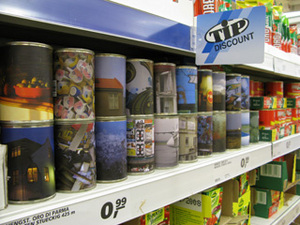
JF: You're living in New Orleans these days. That's a pretty rough place in some patches. Can you really speak about "rendering food items useless" with a clear conscience, you bourgie elitist. I'm just kidding. But seriously.
RWH: New Orleans IS a bit rough these days. But to hear New Orleanians tell it, this town has almost always been like that. The national spotlight just wasn't paying attention. I think the culture here is extremely unique, in that there is a level of freedom that doesn't exist anywhere else in the States. The other side of this, though, is that many people exploit the situation. There is an extremely high level of poverty and drug abuse here. To see that every day on a consistent basis has been an eye opener to the politics of this country over the past decade or so. People really are left to fend for themselves. New Orleans, and its neglect by the federal government since 2005, is a blatant example of this. I grew up in downtown Atlanta in the midst of its yearly competition for the title of "Murder Capital of the US," which teaches a kid a bit of street smarts, but the news here in New Orleans has been worse than anything I've seen in NY or Atlanta. This is a city with rich character and history, but it needs help. The long-time residents of the city are sick of it, and are doing what they can to stop the violence, but I think we need fundamental changes within the city, state, and national government to truly improve the situation. I don't suggest to have any idea what those changes should be, except that a solution certainly won't come in the form of a $300 stimulus check from either major political party.
As far as rendering food items useless with a clear conscience: I think food in our system has already been made pretty useless. Or at least, it has been removed from any sort of thoughtful, conscience part of our day. Most people eat what is cheap and convenient. Corn syrup and fast food. Sugars, sodium, carbs, and empty calories. When I'm busy I live off of canned food and take out. I'm sure my sodium intake right now is dangerously exceeding the recommended daily amount. I guess what I'm trying to say is that we have a surplus of food, and resources in this country to feed our citizens in a healthy and enjoyable way. But we've taken the whole ritual out of the process and many of us choose the hustle and bustle over focusing on the small things and then expect to live off of prepackaged crap.
Benjamin Lanz and Kyle B. Resnick at The AC [Institute]
Thursday, February 12th from 6-8pm
547 W. 27th St, #519
Holly Crawford, director of the AC Institute, has a history of exploring the ways space informs artistic conversation. For the Melbourne International Arts Festival in 2007, she developed the Sound Art Limo and Critical Conversations in a Limo, both pieces existing pretty much as named. Each vehicle would pick up passengers for an hour long 'critical conversation' or a half-hour sound art sampling featuring local artists. The work was simultaneously an investigation of the symbolic place held by the limo in the art fair lexicon, as well as an actual investment in the specific, odd sort of conversation fostered by the proximity of limo riders to each other. One could probably also read the work as a sly questioning of the conditions of possibility for a truly critical discourse under certain conditions.
This Thursday the AC [Institute] will inaugurate its performance series with musicians Benjamin Lanz and Kyle B. Resnick performing live and in dialogue with John Neeson's ongoing installation Northern Light. The AC stands for Art Currents, and this performance promises to continue in a similar vein to Crawford's earlier projects. Multi-instrumentalists Lanz and Resnick with create a soundscape that responds to the shape of the space while exploring, "volume, timbre and spatial relation."
In other news, Rhizome is currently accepting applications for their commissions program. Sponsored commissions from last year included work from Evan Roth, Angelo Plessas, Maria del Carmen Montoya and Kevin Patton, Joe McKay, Kristin Lucas, Andy Graydon, Brody Condon, Claire Evans, Jona Bechtolt, Aaron "Flint" Jamison as well as Naeem Mohaiemen's excellent Young Man Was No Longer A... recently seen at the New Museum.
In his recently closed Alexandria, artist Paul Mpagi Sepuya juxtaposes pages of text torn from novels with abstracted figurative photographs. The pages are taken from Laurence Durell’s Alexandria Quartet, from which the exhibition gets its title. Each text was selected specifically to avoid plot details and focus instead on emotional resonance.
The effect of this combination is a pleasant ambiguity, as the fate of the figure in the photos is reflected as a corresponding absence in plot. We are left with the barest outlines of recollected experiences, recorded in complimentary ways across different media. Each page and each photo seems to inhabit the moment when, its structure having vanished, the memory itself is just about to dissolve. This effect is heightened by the enlargement of the pages as though what little semblance remained was to be scrutinized more closely.
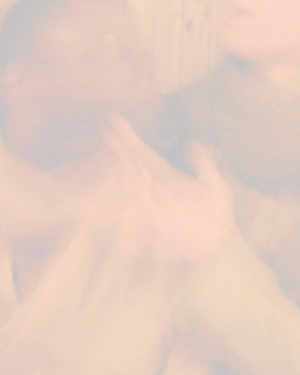
Sepuya’s latest book, a collection of portraits entitled Beloved Object & Amorous Subject, Revisited, revels in the immaculate translation of detail to the printed page. This work is such an obvious contrast that it is tempting to read Alexandria as a flirtation with a different form of representational fidelity, a sort of tawdry, expressionist affair after a long and practical marriage with (literal) photo-realism.
Or perhaps this work is supplementary, merely an attempt at a different sort of portraiture. By lending the portrait frame to a textual narrative as well as abstract portrait, Sepuya might simply be searching for the limits of his own production, indicating precisely where the portrait, as that claim to likeness, falls short. Or maybe he is attempting to render those memories for which likeness or accuracy is not the point, where honesty demands a renegotiation of the relationship to representation.
Speaking with Jack Pierson in a recent issue of Interview, Sepuya has said that he dislikes hanging his work on walls, preferring mantles or shelves instead. Further, almost all of his portraiture is of people he is close to, rather than models or actors. Both of these proclivities can be read as a supporting an artistic practice that grows out of, and takes place within, lived experience. If this is the case, than its quite possible to expect more of the abstract and the conceptual from Sepuya in the future, which, based on Alexandria, would not be a bad thing at all.

Jessica Loudis recently reviewed Trevor Paglen's Blank Spots on the Map: The Dark Geography of the Pentagon's Secret World, published earlier this month by Dutton. Loudis' review will appear in a forthcoming issue of the Brooklyn Rail, but is currently available on her blog. In addition to reviewing the book, Loudis had a chance to talk to Paglen about this project and others. Their conversation is reproduced below. -B.B.
Jessica Loudis:One theme that you develop at great length in the book is the relationship between geography and legality, or the idea that the unmapped and invisible directly inform what eventually becomes permissible in the white world. Could you elaborate on why you think geography is interconnected with law in this way?
Trevor Paglen: Geography is about facts on the ground. If you build something or institute some kind of system or program, what you’re doing is producing space. You’re producing facts. Oftentimes if we’re talking about secrecy or classified programs, these happen outside the law. Covert actions, covert programs, are such oftentimes precisely because they’re illegal in some way, there’s something outside the law about them. So what tends to happen over and over again when you look at the history of this stuff is that those facts on the ground intersect the legal system and in order to preserve them the legal system has to bend around them. There’s a case history that shows exactly this, and it goes back to a precedent called United States v. Reynolds. Now, we see that precedent used over and over and over again, for everything from NSA wiretapping to extraordinary rendition, to cases about CIA black sites. What you’re seeing are these facts on the ground carving out a blank space in the law. But I think what’s crucial here is that the facts on the ground of this stuff -- the materiality of it, the geography of it -- precede the legal stuff surrounding it.
Some bad news out of Punxsutawney. E-flux has found an interesting way of printing its new journal. Meanwhile the economic climate hasn't stopped everyone from expanding their collections. Tyler Green has more on the Rose Museum situation from last week. AFC has more here. In the interim we've learned more about who was actually investing with Madoff. From First Monday, an interesting study on wikipedia pages, and how they are constructed over time. Edward Winkleman has compiled all of his previous advice for artists seeking gallery representation. NPR has the scoop and how much additional funding for the arts is included in the stimulus package being debated in the senate at present. Carol Becker talks with the Brooklyn Rail here, and Shepard Fairey has recently drawn criticism for his unattributed use of AP photographs.
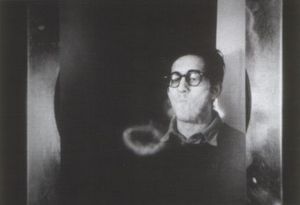
In a city full of underserved cultural stalwarts, the The Film-Maker's Coop has over the past 40+ years distinguished itself with a rich history of archival, programming, preservation and distribution of avant-garde and radically independent cinema. Before video made self-distribution an attractive possibility for motion picture artists, the Coop was as important a distributor of work as it was a social hub for underground and vanguard film-makers. The roster of historic works housed and distributed there is substantial, to say the least -- and certainly includes works increasingly visible to curators and art institutions rapidly discovering the American avant-garde of the past 50 years.
Art Fag City reports today that the Film-makers Coop has received an eviction notice from MoMA, by way of Art Radio International, who have been subleasing the current Coop headquarters since 2000. The Coop's location provides more than just office space; it's also where the thousands of films, videos, and personal archives of the many artists there represented reside. Safely moving such material would require significant funds currently unavailable to the Coop -- film in particular, for example, is very expensive to safely store and transport.
MM Serra and the FMC Board of Directors urges supporters to write "Department of Cultural Affairs Commissioner Kate D. Levin to support our efforts to remain either in our current building or to move to another, affordable city space. You can write to Kate D. Levin directly at this website."
You can learn more about The Film-Maker's Coop here. Their significant catalog of available films is available for online browsing here.
Kim Il-sung, the Dear Leader's father and political predecessor, introduced the concept of Juche in late 1955 as he was formulating his own reaction to the wide sweeping reforms and associated de-Stalinization being then carried out in Soviet Russia. The concept was later championed and expanded on by son Kim Jong-Il, who in 1982 wrote On the Juche Idea, the authoritative document on the concept that came, 10 years later, to succeed Marxism-Leninism as North Korea's official state ideology. The pillars of the concept are an insistence on economic and military self-sufficiency (as opposed to the internationalism at the center of most socialist programs), an aggregate people's independence in thought and politics, a context-specific revolutionary process and the importance of a thoroughly communist and cooperative populace. These ambitious designs are of course not the lived reality of most North Koreans, who often face food shortages and rely on vital foreign aid from China and others, not to mention endure rather severe restrictions on individual political and economic freedom. And yet there remains something vaguely seductive in this Juche idea, something perhaps echoing the hopes of a non-aligned movement, a national attempt, however flawed, to swim out of the riptides of the Cold War, out of the very riptides of history. The Juche Idea is also the title of filmmaker Jim Finn's latest major work, which delves into the isolationist state's rich history of state-sponsored and propagandist filmmaking (in the 1970s, Kim Jong published a treatise on cinema) and comes out with what appears to be a suite of shorter films strung along a playful meta-narrative of a South Korean video artist making work on a special North Korean residency program. Unlike so many contemporary artists who show nothing but naked contempt for such difficult topics, Finn approaches his with a unique humor and wit. He uses the vehicle of this fanciful conceit to deliver a polyvalent and aesthetically strong critique of capitalism and the nature of modern power.
The Juche Idea will play at Anthology Film archives early next week on Monday, 9 February at 7:30.
Please note, dear readers, that Artcal Zine is now on Twitter, where you can follow updates on our daily posts and activities. Please follow.
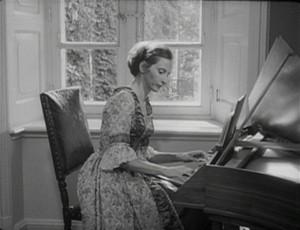
Chronicle of Anna Magdelena Bach
7:30pm Wednesday 4 February 2009
Migeul Abreu Gallery - 36 Orchard Street, New York NY
1967, DVD (orig. 35mm), 93 minutes
Directed by Jean-Marie Straub & Danièle Huillet
Tomorrow at Miguel Abreu Gallery, visitors will have a chance to see Jean-Marie Straub & Danièle Huillet's 1967-68 classic Chronicle of Anna Magdelena Bach. This is the first major work from the French husband-and-wife auteurs, known for their formally rigorous output. The film is a kind of biography on the baroque German composer as narrated by his second wife, Anna Magdelena. It is through Bach's music, however, that the film speaks most precisely, and there are remarkable performances throughout, executed by some of Germany's best classical musicians of the time and all delivered in period costume. The German language Chronik... has been available since 2005 to American audiences on DVD. It will be projected at the Miguel Abreu gallery as such, with English subtitles "on."
Kitten
Andres Laracuente, Matthew Lutz-Kinoy and
John Patrick Walsh
Jane Kim / Thrust Projects -
114 Bowery #301, New York NY
16 January - 22 February 2009
It’s funny, and maybe telling, that Thrust Projects is a short walk down the Bowery from The New Museum. Thrust’s current exhibit, Kitten, has the earmarks of recent New Museum shows – a precise mix of media and somber colors within varied types of work, and an equally precise subsequent placement of those works.
Kitten particularly recollects Unmonumental: The Object in the 21st Century, an exhibition that marked the opening of the New Museum’s Lower East Side location. The two exhibitions, while very different in scope and ambition, share an emphasis on the curious, the found, the discarded and the repurposed. A series of objects – a double-headed cane, two paddles of the whacking variety rather than the boating, etc. – are carefully lined up against one wall of the gallery at Thrust. The piece, Disciplines Disciples, by John Patrick Walsh, reminded me of Abraham Cruzvillegas's Canon enigmatico a 108 voces from Unmonumental. Beyond the formal similarities the two seem to operate with a similar logic, to work in a similar spirit.
Comparing a three-person group show to something as ambitious as Unmonumental is of course unfair. However, this distinction between the two is what makes Kitten notable – the exhibition and the venue are mutually appropriate. Exhibitions like this one, filled as they are with often unbeautiful oddities, sometimes come across as displeasing, inaccessible, or at worst, pointless. However, in no way does a single show discredit the individual works exhibited. It becomes then all the more necessary to show the right work in the right way. Kitten, organized by artists Andres Laracuente, Matthew Lutz-Kinoy and John Patrick Walsh (along with guests dropping by to do accompanying performances which have marked Kitten’s tenure) is a model for artist-organized exhibitions of sculpture and mixed media works.
Thrust Projects is housed in an intimate space, whereas the ratio of the grand scale of the New Museum’s galleries to the curios contained within made Unmonumental unecessarily hard. (Humorously, many opined last year of the New Museum's relative lack of space when compared to New York's other major museums of contemporary art.) The difference is like seeing a macau in a petting zoo instead of the jungle. It’s just easier to get a thorough look at the petting zoo.
Works like those at Kitten require a good close-up, particularly not to miss their humor. The down-the-rabbit-hole approach to art making works the best when it’s funny, and Smoking pipes with shoes by Walsh at Kitten is a fine example of that. The piece features two exhaust pipes with an old pair of men’s shoes sitting on top. While I looked around, the gallerist lit two sticks of opium incense that were poking out the pipes. The piece looked ready for takeoff, like a modern-day witch’s conveyance. Sub in incense twigs for the branches of a broom, and it was ready to go.
ZINE
HOME
TIPS / COMMENTS
CATEGORIES
CONTRIBUTORS
- Greg Afinogenov
- B. Blagojevic
- Adda Birnir
- Susannah Edelbaum
- Julie Fishkin
- Paddy Johnson
- Jessica Loudis
- Christopher Reiger
- Andrew Robinson
- Peter J. Russo
- Blythe Sheldon
- S.C.Squibb
- Hrag Vartanian

